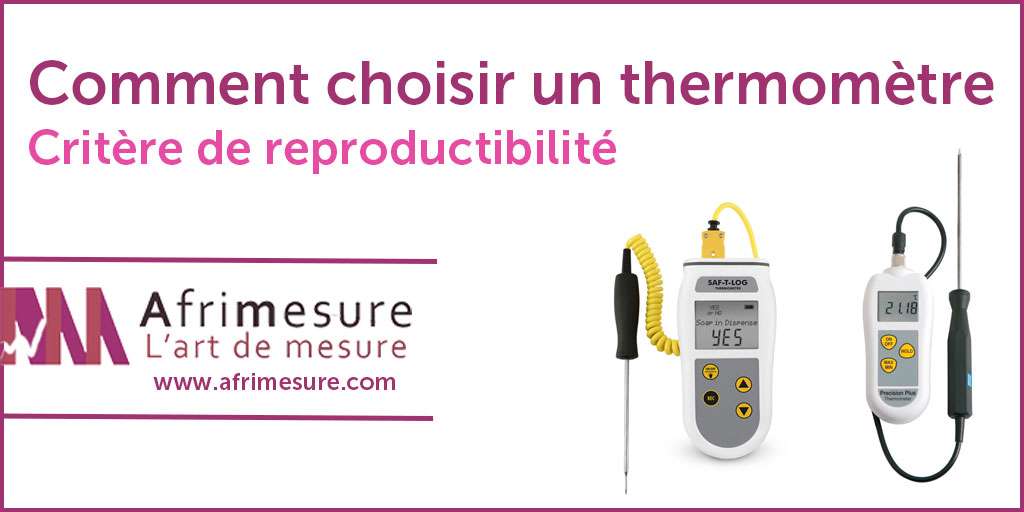
To choose the right thermometer in Tunisia, you need to consider several key factors to ensure you have the right instrument for the right application.
Among these criteria, reproducibility (or fidelity) is very important when choosing your thermometer.
Reproducibility, precision and resolution are the basic elements on which all good thermometer technology is built. Some expensive thermometers on the market today are quite accurate, but not reliably reproducible.
This means that you may or may not have accurate temperature data depending on the performance of the thermometer at the time you take your measurement.
A thermometer measuring the temperature of ice water should read 0°C consistently, and not swing between 0°C once, 1°C at one point and then -1°C. This indicates that your instrument suffers from measurement stability, making your values questionable.
A common challenge to thermometer reproducibility is a phenomenon known as hysteresis. With hysteresis, the physical properties of an instrument, such as a temperature probe, are temporarily altered by the measurement process. Thermometers with hysteresis will display different temperatures in the same material, say an ice bath, over a short period of time and are therefore not reproducible.
This problem is common with mechanical thermometers such as bimetal dial thermometers, but can also affect electronic thermometers. A prolonged period of rest can allow the instrument's physical properties to return to normal, but often only temporarily.
To make the difference between reproducibility ( which is the ability of your thermometer to measure very close values under the same conditions ) and repeatability ( which is the ability of the user to measure very close values under the same conditions,
Repeatability and reproducibility are two components of precision in a measurement system. Here are some basic concepts for these two terms
The ability of an operator to consistently repeat the same measurement of the same part, using the same instrumentation, under the same conditions.
Operator 1 measures a single part with instrumentation A 20 times, then measures the same part with instrumentation B.
The solid line corresponds to measurements made with instrumentation A. The dotted line corresponds to measurements made with instrumentation B. Instrumentation A shows less variation; it is therefore more repeatable than instrumentation B.
Ability of an instrument, used by several operators, to consistently reproduce the same measurement of the same part, under the same conditions.
Operators 1, 2 and 3 measure the same part 20 times with the same instrumentation.
The three lines represent the measurements of operators 1, 2 and 3. The variation in average measurements between assessors 1 and 2 is much smaller than the variation between assessors 1 and 3. Consequently, the reproducibility of the instrumentation is too low.
https://www.bipm.org/fr/publications/guides/vim.html
Tightness of agreement between the results of measurements of the same measurand, carried out under varying measurement conditions.
NOTES
1- For an expression of reproducibility to be valid, the conditions to be varied must be specified.
2- The conditions to be varied may include: measurement principle, measurement method, observer, measurement instrument, reference standard, location, conditions of use, time.
3- Reproducibility can be expressed quantitatively in terms of the dispersion of results.
4- The results considered here are usually the corrected results.
The closeness of agreement between the results of successive measurements of the same measurand, carried out under all the same measuring conditions.
NOTES
1- These conditions are called repeatability conditions.
2- Repeatability conditions include: same procedure, same observer, same measuring instrument used under the same conditions, same location, repetition over a short period of time.
3- Repeatability can be expressed quantitatively in terms of the dispersion of results.